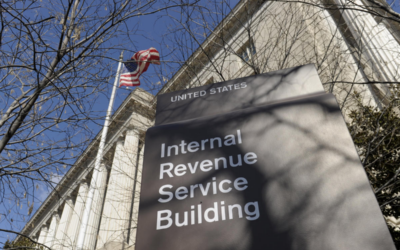Wage garnishment is a legal procedure where a person’s earnings are required by court order to be withheld by an employer for the payment of a debt (such as unpaid taxes). This article covers the intricacies of wage garnishment as a method of IRS collections, its legal implications, and the rights and responsibilities of the parties involved.
Employers should understand their legal obligations and the processes involved in wage garnishment to avoid penalties. For employees, it’s important to understand the circumstances under which wage garnishment can occur, how it impacts their income, and what rights and remedies they have under the law.
Understanding Wage Garnishment
Wage garnishment is a serious matter and is usually a last resort for the IRS. It typically occurs when a taxpayer has failed to pay their taxes and has also failed to make arrangements with the IRS to settle the debt. In such cases, the IRS may order the taxpayer’s employer to send a portion of the taxpayer’s wages directly to the IRS.
Before a wage garnishment occurs, the IRS will first send a notice to the taxpayer, detailing the amount of tax owed, including penalties and interest. The taxpayer is given a chance to either pay the amount in full or make arrangements for payment. If the taxpayer fails to respond or fails to make arrangements for payment, the IRS may then proceed with wage garnishment.
Legal Basis for Wage Garnishment
The legal basis for wage garnishment is found in Title II of the Consumer Credit Protection Act. This federal law provides that up to 25% of a person’s disposable earnings may be garnished by court order for the payment of debts. The IRS, however, is not bound by this limit and can garnish more than 25% of a taxpayer’s disposable income under certain circumstances.
However, the law does provide certain protections for the taxpayer. For instance, it prohibits employers from firing an employee because their wages have been garnished for any one debt. It also sets a maximum amount that can be garnished from a person’s wages.
Process of Wage Garnishment
The process of wage garnishment begins with the IRS sending a Notice and Demand for Payment to the taxpayer. This notice details the amount of tax owed and gives the taxpayer a chance to pay the amount in full or make arrangements for payment. If the taxpayer fails to respond or cannot make arrangements for payment, the IRS will then send a Final Notice of Intent to Levy and Notice of Your Right to A Hearing at least 30 days before the garnishment is to start.
Once the garnishment starts, it continues until the entire debt is paid or arrangements are made to pay the debt. The employer is required to send the garnished amount directly to the IRS each pay period. If the employer fails to do this, they may be held liable for the amount that should have been garnished.
Impact of Wage Garnishment
Wage garnishment can have a significant impact on a taxpayer’s financial situation. Because the garnishment is taken out of the taxpayer’s paycheck, it reduces the amount of money that the taxpayer takes home. This can make it difficult for the taxpayer to meet their other financial obligations.
Garnishment can also impact a taxpayer’s employment. Although federal law prohibits an employer from firing an employee because their wages have been garnished, the employer may be less inclined to promote or give raises to an employee whose wages are being garnished. This can further exacerbate the taxpayer’s financial difficulties.
Financial Impact
The financial impact of wage garnishment can be severe. The amount of money that can be garnished from a person’s wages is based on their disposable income, which is their income after legally required deductions are made. These deductions include federal, state, and local taxes, Social Security, and the employee portion of state unemployment compensation insurance. Any money that is left over is considered disposable income and is subject to garnishment.
For taxpayers with a large amount of unpaid taxes, the IRS can take a significant portion of their disposable income. This can leave the taxpayer with very little money to meet their other financial obligations, such as rent or mortgage payments, utility bills, and food and transportation costs.
Employment Impact
While the law protects employees from being fired due to wage garnishment, it can still have an impact on their employment. Employers may view an employee with a wage garnishment as a financial risk. This can affect the employee’s chances for promotion or raises. Furthermore, if the employee has a job that requires a security clearance, a wage garnishment could potentially jeopardize their clearance.
Additionally, dealing with a wage garnishment can be stressful and time-consuming for employers. They are required to administer the garnishment, which includes calculating the garnishment amount each pay period and sending the money to the IRS. This can strain the employer-employee relationship, particularly in small businesses where the employer and employee may have a close working relationship.
Preventing and Stopping Wage Garnishment
There are several ways to prevent or stop wage garnishment for unpaid taxes. The best way to prevent wage garnishment is to stay current with tax obligations and respond promptly to any notices from the IRS. If a taxpayer is unable to pay their taxes in full, they should contact the IRS to discuss payment options.
If wage garnishment has already started, the taxpayer has several options to stop it. These include paying the debt in full, setting up a payment plan with the IRS, or proving that the garnishment is causing financial hardship. In some cases, the taxpayer may be able to negotiate a settlement with the IRS or have the debt discharged in bankruptcy.
Payment Plans and Offers in Compromise
If a taxpayer is unable to pay their tax debt in full, they may be able to set up a payment plan with the IRS. This allows the taxpayer to pay their debt in monthly installments over a period of up to six years. The IRS will generally stop wage garnishment once a payment plan is in place.
In some cases, the taxpayer may be able to negotiate an offer in compromise with the IRS. This is an agreement between the taxpayer and the IRS where the taxpayer agrees to pay less than the full amount of the tax debt. If the IRS accepts the offer, the wage garnishment will be stopped.
Financial Hardship and Bankruptcy
If wage garnishment is causing financial hardship, the taxpayer can request a hearing with the IRS to prove their hardship. The taxpayer will need to provide detailed financial information to the IRS, including income, expenses, and asset information. If the IRS determines that the garnishment is causing financial hardship, they may stop the garnishment.
In some cases, filing for bankruptcy can stop wage garnishment. However, this should be a last resort as bankruptcy has serious financial consequences and does not always discharge tax debts. Furthermore, while a bankruptcy filing will stop wage garnishment temporarily, the garnishment will resume once the bankruptcy case is closed if the tax debt was not discharged in the bankruptcy.
Conclusion
Wage garnishment is a powerful tool that the IRS uses to collect unpaid taxes. It can have a significant impact on a taxpayer’s financial and employment situation. However, there are ways to prevent and stop wage garnishment. Understanding the process and knowing the options can help taxpayers navigate this challenging situation.
It’s important to remember that the best way to avoid wage garnishment is to stay current with tax obligations and to respond promptly to any notices from the IRS. If you’re facing potential wage garnishment, consider seeking advice from an experienced tax attorney with a proven track record in IRS defense. They can help you understand your options and guide you through the process.





